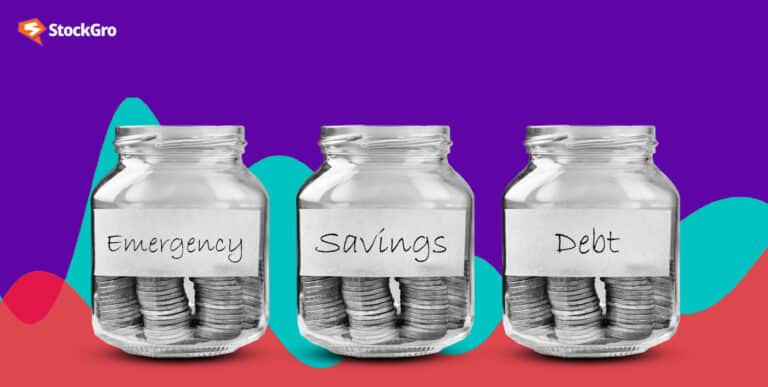
Are you aware of the financial literacy month in India? Or that the RBI runs an annual financial literacy week? Building money skills has never been more vital. Over 70% of Indians lack financial fluency, leaving them vulnerable.
This article explores why boosting national monetary know-how matters, highlights India’s annual financial literacy week, and spotlights financial wellness programmes aiming to empower vulnerable groups towards prosperity.
Also read: Creating budget and sticking to it
Why is financial literacy critical in India?
Every country’s biggest asset is its people, who know how to manage finances since that directly affects the development of the economy. Here are some essential reasons to discuss the importance of financial literacy:
Improvements to rural regions:
Financial literacy is a tool for reaching out to rural areas and helping them prosper. This can be done by letting more people know about the tools that are out there and how to use them properly.
Convenience of borrowing:
Research by the Reserve Bank of India found that over half of all borrowers (42.9% of the population) used informal lending sources, resulting in higher interest rates. Small traders can make better judgements and manage their resources more effectively with a solid financial education.
Making business easier:
As a result of the Pradhan Mantri Jan Dhan Yojana, 280 million people now have bank accounts. Because of these accounts, doing business has become more accessible, and cashless transactions have become increasingly common.
Small businesses are growing:
India’s small and medium-sized enterprises account for half of the country’s exports and drive 29% of GDP. Businesses, both big and small, may benefit from increased financial literacy, which in turn can attract new customers.
Also read: How to achieve financial freedom
Financial literacy month: a way to improve personal finance awareness
If you believe in the importance of financial literacy, then April might be an ideal month for you to educate yourself and others about finance. April is considered “National Financial Literacy Month” by those who are financially literate. The goal is to make people more aware of how important it is to understand money and have strong money management skills.
To spread awareness about the necessity of having monetary knowledge, the United States began celebrating Financial Literacy Month in April 2004. Currently, people throughout the globe observe this time frame as a reminder to have greater control over their finances.
The financial literacy percentage of adults and youth in India has been on the rise recently, thanks to several factors, including enhanced media coverage and technological advancements. India’s government and different officials are always trying to boost growth by putting in place classes, training, and plans for financial knowledge.
Financial literacy week: RBI’s new initiative for economic empowerment
Since 2016, the Reserve Bank of India (RBI) has held Financial Literacy Week annually to spread information about financial awareness on topics such as “MSMEs,” “Credit Discipline and Credit from Formal Institutions,” “Digital Financial Literacy,” and more.
“Good Financial Behaviour, Your Saviour” was the central idea of the 2023 Financial Literacy Week, which took place from February 13th to the 17th of that year. The focus was on “saving, planning, and budgeting.”
Financial wellness programmes by the Indian government
Several regulatory agencies in India, including the Reserve Bank of India (RBI), the Securities and Exchange Board of India (SEBI), the Insurance Regulatory and Development Authority of India (IRDAI), and others, have made expanding access to financial services a priority issue.
Pradhan Mantri Jan Dhan Yojana (PMJDY)
Launched in 2014 as the National Initiative on Financial Empowerment, the objective of such financial education initiatives is to make sure that all people in India have access to banking facilities, which is part of complete financial inclusion.
Anyone who doesn’t already have a savings account can open one with no minimum amount requirement. Opening a small account is also possible if they self-certify that the official papers needed to open a savings account aren’t with them.
Pradhan Mantri Jeevan Jyoti Bima Yojana (PMJJBY)
Anyone from 18 to 50 years old with a bank account who is willing to enrol or accept auto-debit may apply for the PMJJBY. The Life Insurance Corporation runs the scheme. Any other life insurers that want to sell the product on similar terms, get the necessary permissions and work with banks can also join.
Pradhan Mantri Suraksha Bima Yojana (PMSBY)
Individuals with a bank account who are at least 18 years old and who choose to activate auto-debit before May 31st for the insurance period of June 1st to May 31st on a yearly renewal basis are eligible to participate in the scheme.
The scheme’s risk coverage amounts are 2 lakh rupees for complete disability and accidental death and 1 lakh rupees for partial impairment.
General insurance companies, whether they are part of the public sector or not, can participate in the initiative as long as they meet specific requirements, have the necessary permissions, and have partnerships with financial institutions.
Also read: What is financial freedom formula
Stand Up India scheme
In 2016, the Indian government launched the Stand Up India campaign. Women, people from SC and ST categories, and others who encounter significant challenges due to a lack of guidance and mentoring and insufficient funding are the intended audience for the Stand Up India project, which aims to encourage entrepreneurship.
At least one woman and one member of a Scheduled Caste or Scheduled Tribe may apply for a loan of 10 lakhs to 1 crore rupees per bank branch via the scheme to start a greenfield business. This company could be involved in agricultural-related trading, manufacturing, or providing services.
Pradhan Mantri Mudra Yojana
This system became operational in 2015 in three categories: the ‘Shishu’ sub-scheme, the ‘Kishore’ sub-scheme, and the ‘Tarun’ sub-scheme. Loans may be issued without collateral under this policy. The goal of these initiatives is to encourage more educated and talented young people to pursue the dream of starting their businesses.
Conclusion
India’s financial literacy month and RBI week show that investment education and financial literacy resources are urgently needed. Training that makes budgets, savings, and investing clear, in simple words, helps people. More of these initiatives across India can improve lives and boost India’s economy.

